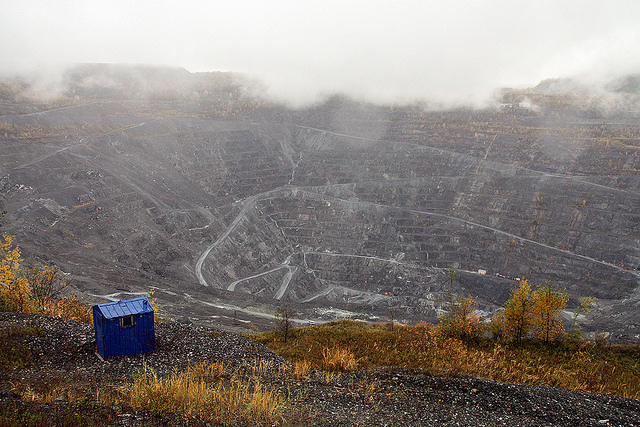In a flurry of activity on the eve of Parliament’s winter break, the Trudeau government plans to — finally — fully ban asbestos.
The government will announce tomorrow that Canada will no longer allow the import, export or use of asbestos.
The scientific and medical communities have long established a clear connection between asbestos fibres and a number of deadly forms of cancer. Nonetheless, Canada has lagged behind many other countries in entirely banning the product.
There was a time, in fact, not too long ago, when both the Quebec and federal governments wanted to revive what had become a languishing asbestos industry.
Quebec, in towns such as Thetford Mines and (appropriately named) Asbestos, was the main producer in Canada. After most wealthy, developed countries banned the carcinogenic mineral, the province sought to find markets in poorer, developing countries.
Kathleen Ruff, who was at one time director of the federal Court Challenges Program and currently heads the human rights advocacy campaign RightOnCanada, has worked hard for an asbestos ban in Canada for many years. She considers the dumping of asbestos onto poor countries to be a particularly odious practice.
“It is as though some people’s lives are not worth as much as others,” she says.
Industry spokespeople argue that asbestos bonded in cement, which is the primary form in which the mineral is used in the developing world, is safe. The dangerous fibres are not free and loose when bonded in cement, they say, and people can safely live and work in buildings made from asbestos blended with cement.
One flaw in that argument is that the cement containing asbestos is not exported to the developing world as a finished product. Asbestos is exported, raw, and is then mixed with other ingredients to form cement and other building materials. Workers in developing countries have to handle the asbestos, the fibres of which cause cancer and other diseases.
In addition, once the cement is produced, it still poses significant hazards, in the view of anti-asbestos activists.
“Like tobacco, it is safe — until you use it as prescribed!” Ruff explains. The minute construction workers cut the cement, fibres are released, gravely threatening the workers’ health. Similarly, when structures built with cement containing asbestos are damaged, the deadly fibres come loose.
“In many poor countries,” Ruff says, “you routinely see children sitting and playing in classrooms under damaged roofs made with asbestos. The harmful fibres fill the air, compromising the children’s health.”
A political sacred cow
Canada has been slow to take on the asbestos industry, in part, because asbestos has long been considered a political sacred cow in Quebec.
Back in 2010, when the NDP’s Jack Layton became the first federal party leader to join the campaign to ban asbestos, political pundits predicted his decision would ruin Layton’s party’s chances in Quebec, where they had only one seat. In the election of 2011, the NDP won 59 seats in Quebec.
The next year, the new Parti Québecois (PQ) minority government of Quebec, led by Pauline Marois, had the political courage to cancel a $58 million loan its Liberal predecessors had given to an asbestos mining company. The PQ rescinded the money, even though the previous government had already started transferring it to the company.
Those moves might have signalled the beginning of the end for asbestos in Canada. Throughout the Harper years, however, the federal government was loath to limit or even regulate the asbestos industry.
Ruff believes this is because of Harper’s generally pro-mining bias, and because he wanted to keep his options open, should any future Quebec governments decide to reverse the PQ decision and attempt to lure businesses to invest in their province’s dormant asbestos mines.
Ruff and others lobbied the Justin Trudeau-led Liberals to take a tougher stand, both while they were in opposition and once they were in office.
The lobbyists persistently reminded Liberals that their party claimed to be in favour of evidence-based policy. And the evidence, Ruff and her colleagues insisted, is overwhelming that there is no safe way to use asbestos. Its impact on human health is long term and extremely damaging.
Those efforts have now paid off. Stay tuned for Science Minister Kirsty Duncan and Health Minister Jane Philpott’s announcement on Thursday.
To stop dumping onto developing countries
Ruff now hopes the next step will be for Canada to support a crucially important UN treaty, which goes by a very long name: the “Rotterdam Convention on the Prior Informed Consent Procedure for Certain Hazardous Chemicals and Pesticides in International Trade.”
The purpose of that agreement is, primarily, to protect nations of the global South from having toxic substances such as asbestos dumped on them.
The idea of prior consent is that countries should have the right to be fully informed of all the dangers of asbestos and other dangerous substances before agreeing to accept them.
Since agreements such as the Rotterdam Convention require consensus — in effect, unanimity — Canada and a few other holdout countries have been able to stymie implementation of the Convention.
A group of African countries are currently working to end the deadlock.
In a few months time, they plan to propose that the terms of the Rotterdam Convention be amended so that it does not need unanimity. The agreement of 75 per cent of UN member states should be sufficient, they contend.
The international asbestos organization, which calls itself the International Chrysotile Association (ICA), using the less sinister-sounding name for the most common type of asbestos, is based in Canada, and has signaled its fierce opposition to this African initiative.
Until not too long ago, the ICA could count on Canadian government support.
That is much less certain now.
Photo: Flickr/Jacques Lebleu
Like this article? Please chip in to keep stories like these coming.



